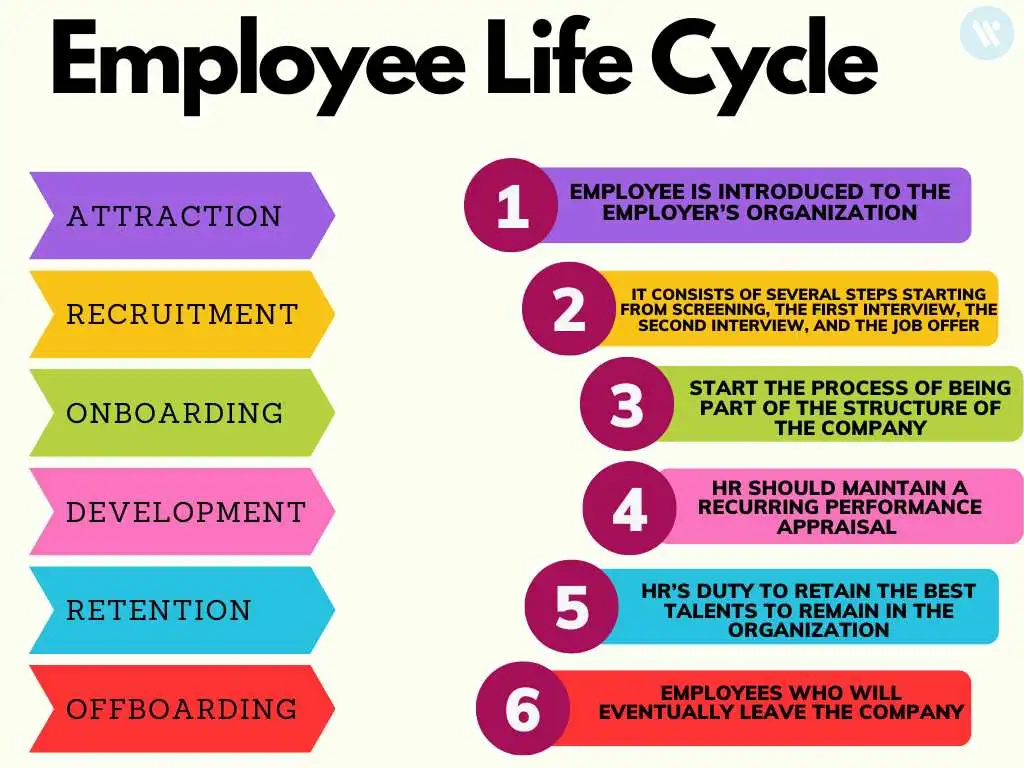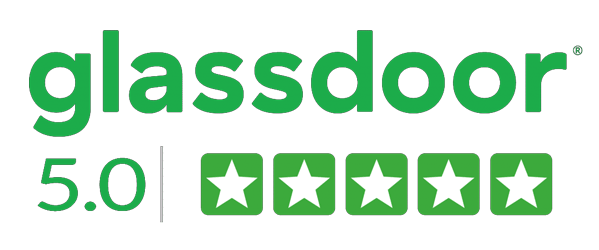
Quick Navigation
What is an Employee Life Cycle?
The employee life cycle is the funnel through which they advance in their initial interactions with the organization. It is an HR model that consists of different stages, each defining the status of the employee’s experience.
The employee life cycle optimizes the whole recruitment flow starting from screening until the onboarding. Moreover, it helps the HR personnel to organize all the stages and ensures a clear and simple onboarding experience for candidates.
The life cycle model provides the new hires with clear steps and answers to most of their questions during the onboarding stage. It also provides employers with data that they can use to analyze the process of recruiting and hiring.
While the stages of the employee life cycle differ from one organization to another, there are 6 common stages which the employees pass through. They are attraction, recruitment, onboarding, development and nurture, retention, and offboarding.
The 6 Stages of the Employee Life Cycle
1- Attraction
It is the earliest stage where the employee is introduced to the employer’s organization. This exposure constitutes the first impression of the company.
It might be that a friend of the employee previously worked there or they have found the job post to which they have expressed interest in applying.
A well-crafted job description post is key to attracting the right candidate early on. You should showcase the company’s culture along with an accurate description of the position’s responsibilities.
Furthermore, you should highlight all the benefits of the position. That way, you guarantee to provide the right talent with the motivation to change their current job and apply for your vacancy. Here are the most aspects the candidate will need to know before sending their resumes:
- Work-life balance.
- Diverse culture.
- Maternity and paternity leaves.
- bonuses and incentives.
- Flexible working environment policies.
Including all the details and benefits of the company is crucial in the attraction stage of the employee life cycle. Without fully understanding your company, they might not be interested in applying or joining your company.
2- Recruitment
Once the right talent expresses their interest in joining you, it is time for the next stage of the model; recruitment. It consists of several steps starting from screening, the first interview, the second interview, and the job offer.
During this stage, you need to depend on a talented professional recruitment specialist that knows how to manage and successfully finish the recruitment stage. A professional recruiter would use automation tools to manage the whole recruiting flow without missing any details.
They have a wide pool of qualified talents in all industries and they can make use of their database and network of talents to post and headhunt the right talents for you.
Then, They will screen candidates and schedule the first interview with the qualified talents. They will also prepare the second technical interview for the talents that have passed the screening and the first interview successfully. Finally, they will help you determine the best job package to send to the accepted candidates.
3- Onboarding
At this stage, you have already selected a candidate to join you and they will start the process of being part of the structure of the company. Onboarding offers the new hire all the information and training material needed to fully understand the position they are joining.
The new employee starts to learn in-depth about the company’s culture, policies, and job duties. HR should ensure a smooth onboarding experience by providing the new employee with a copy of the employee handbook. The handbook will include various information about a lot of questions they might have.
It is better to provide constant appraisal in the onboarding stage so they understand their strength and areas of improvement early on. The new employee will care to understand the career path they are presented with as well.
4- Development
After passing the onboarding stage, HR should maintain a recurring performance appraisal which is ideally conducted quarterly. The new employees will be able to learn and increase their productivity in case they continuously receive feedback for their work through performance reviews, one-on-one discussions and meetings.
In return, employees can provide feedback on their work and management. This process is valuable for employers as they gain insights and data about the performance of everyone in their teams.
5- Retention
At this stage, the employee has already proven to be productive and essential to the success of the organization. It is the HR’s duty to retain the best talents to remain in the organization. Employees are retained if they feel appreciated enough.
The top employees should receive recognition and rewards for their performance accordingly. The continuous appraisal should result in advancement in the career path of the top talents as well.
When employees join a new job, they aim to be promoted if they do a good job. Defining a career development path for all employees depending on their position is key in retaining talents.
If they feel they are learning new technologies and gaining new knowledge they will make use of the new knowledge in their work which will benefit them and their employers alike.
Your goal as HR is to reduce the turnover rate and maximize the retention rate.
6- Offboarding
After all the efforts to retain employees, there are a few employees who will eventually leave the company. There are various reasons for offboarding employees. They might be leaving to join a new job or they might be leaving due to retirement, layoffs, or personal and health reasons.
You need to ensure a thorough offboarding experience by conducting exit interviews to understand and analyze the reasons employees choose to leave. Onboarding is a chance to keep positive feedback regarding the organization and a chance to gain helpful insights on how to improve the employee life cycle.
In Conclusion
Employee life cycle management guarantees a peaceful and satisfying working environment for all employees. It reduces burnout, turnover rate or any frustration during work. HR should carefully create a complete employee life cycle model to help organizations succeed and retain top talent.
Quick Navigation



